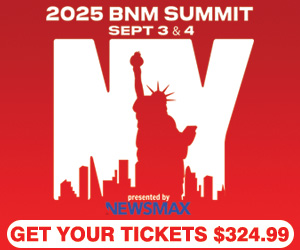In most buildings, talent are conditioned to think about the here and now. They’re consumed with creating content, watching and reading about sports and other topical events, and forming emotional connections with their listening audience. Few are spending their time studying industry trends and changes or creating Plan B strategies to assure their brand remains relevant across multiple media platforms in the event of a catastrophic shift in audio consumption.
The same can be said of many programmers, sales managers, and account executives. Today’s tasks are what matter most and winning the next month or quarter helps determine if the boss remains satisfied and a future raise awaits.
But while we’re all caught up in our day to day responsibilities, it’s too important to stay informed on the way our business is changing. You may think that radio is bulletproof but one piercing of the skin could require much more than a band aid. I’m not talking about a competitor’s decision to adjust their lineup or the station’s largest client switching its ad agency and reevaluating how much business they want to do with your brand. I’m talking about change that can affect every single person and brand and the way our entire industry thinks and operates.
Now before you sound the alarm and start emailing copies of your resume to the real world, relax. Radio isn’t going anywhere tomorrow nor the day after. But if we’re not smart and strategic in the future, we could be in deep trouble because technology is moving at the speed of sound and it’s not going to wait around for anyone.
If you weren’t aware, last week the country of Norway announced that it was eliminating FM radio. The Norwegian government said the country’s high mountains and scattered population make it expensive to operate the Norwegian FM networks compared with other countries, and a growing confidence in digital audio was behind their reason to change course.
As a result of the change, the government estimates that radio stations will save 23.5 million dollars per year. They also feel that broadcasters will have access to more channels and better audio quality by operating in the digital space.
“Radio digitization will open the door to a far greater range of radio channels, benefiting listeners across the country,” former Minister of Culture Thorhild Widvey said in a statement in 2015. “Listeners will have access to more diverse and pluralistic radio content, and enjoy better sound quality and new functionality.”
Although Norway is the first to execute this strategy, other countries such as Denmark and the United Kingdom are said to be considering following suit. Switzerland has also pledged to shut down FM broadcasting by 2020.
There will certainly be some bumps in the road when making such a drastic change, but the digital audio space is seen as an open road full of possibilities. The surplus of content is enormous, listening and downloading of programming is available on each individual’s time, and broadcasters are treated to more reliable measurement. It also happens to be where the majority of advertising dollars are moving.
When Napster and other file sharing software became available in the 1990’s, the record industry didn’t take the threat seriously. That lack of concern resulted in the music industry experiencing years of agony and a whole lot of financial pain. Fast forward to today and the majority of music is downloaded and purchased online, and companies like Spotify, Pandora, YouTube and Apple have become very lucrative.
Here’s something to ponder that you may not have ever considered before, what would your brand identity be if your product was removed from the AM and/or FM dial? Many stations tie the name of their brand to their dial position and the frequency they broadcast on, but if those two things were eliminated tomorrow, how would you be identified?
The answer is many of you would be pushing the panic button because your entire brand history would be permanently altered.
Why does that matter? Because technology is changing the game. Many of us may accept the status quo with the dashboards inside of our vehicles, but the auto industry believes it can make the experience inside of your car better and more attractive. In doing so, they believe it will result in more sales and higher customer satisfaction.
If you didn’t notice, two of the hottest selling products on the market this holiday season were Alexa by Amazon and Google Home. Each have been a big hit with consumers and the auto industry has taken notice.
Case in point, Ford has formed a partnership with Amazon to make Alexa available inside of its cars, and voice activation is an attractive feature to automakers. Once the inside of your vehicle begins to offer this service, and the dashboard is no longer controlled by an FM and AM tuner, the only way you’ll stand out is through audience recall.
In order to do that, you must create a powerful brand. There are hundreds of thousands of digital audio options to enjoy, but if the consumer can’t remember you or isn’t familiar with what you offer, then you’re as useful as a white crayon.
Are these products good for radio’s future? I believe they can be. Except radio may have to rethink and expand its content and distribution strategy and pursue other areas of the entertainment business. iHeart and Townsquare have already done this by becoming event creators and marketers, and Hubbard and E.W Scripps have too through significant investments in podcasting.
In recent years, many in the industry have been skeptical of the growth potential of digital audio. Inventory counts are drastically lower, and consumers have been unwilling to foot the bill to enjoy consuming content, which means it’s financially unattractive when compared to radio’s current business model. But, if it’s where the audience is shifting, and distributors begin to introduce newer technology at the expense of the previous models which had been reliable and successful for previous decades, then the industry has two choices – adapt or risk permanent damage.
Our industry has done a great job building and sustaining its local awareness, community connection, and visibility. That approach has enabled stations to build bonds with the audience, making it easier for them to be remembered. Those type of relationships help a brand remain important to a consumer who has access to voice recognition software or a digital dashboard.
It’s true that innovation is happening lighting quick and what seems groundbreaking today could be old news tomorrow, but one thing we can’t take for granted is radio’s position in the car through FM and AM distribution. All it takes is one monumental change in the way audio is distributed, and the business as we know it would not exist.
I can’t see the United States of America abandoning FM and AM radio the way other countries have, but to think that in the next ten years there won’t be massive changes and a heavier focus on digital distribution is simply naive.
Throughout my career I’ve tried to prepare myself for the “what if” scenarios. What if my best talent retired tomorrow? What if my legendary play by play announcer had to step aside as the voice of the local team which my brand held the rights for? What if a new social media platform launched and the audience shifted away from Facebook and Twitter? What if the identity of my brand was changed?
Fortunately, I was able to avoid these situations, but I’m a believer that when chaos ensues, it’s the ones who are prepared beforehand who navigate the rough roads best.
I’ll share one small example with you about preparing for change.
When we were building what is now known to sports radio folks as 101 ESPN in St. Louis, we launched with the rights to the St. Louis Rams, St. Louis Billikens, and a partnership with ESPN. The ESPN relationship in particular provided us with an opportunity to align our on-air and online branding.
During our first two years, we gained strong traction in the marketplace using the name 101 ESPN and 101ESPN.com. But as many great brands and leaders do when they’re having success, we held open dialogue about some of the potential dangers that could face us down the road.
We heard whispers about the Rams potentially relocating. We realized there was a chance that a key personality or two could elect to leave in the future to pursue a different opportunity when their contracts expired. And there was this one longshot possibility that we didn’t give much thought to but could never be discounted, what if we lost ESPN?
We had zero control over the Rams future, confidence in ourselves to retain valuable people inside the organization, and a great relationship with ESPN, but we were also not privy to their future plans or opportunities in St. Louis. Although the likelihood of the relationship changing seemed farfetched, in the world of business, you can’t rule anything out.
As we analyzed our future, we determined that it’d be a wise move to change the website branding of the radio station and align it with something we had future control over – the 101 FM frequency. We continued to position the on-air brand as 101 ESPN, while getting the audience more familiar with the new name of our website 101Sports.com.
In taking that approach, we were able to keep the station on track and built around a powerful brand like ESPN, yet prepare ourselves for the future by positioning the website with a name that would become a logical and easy transition should the on-air identity be compromised. Having pounded that branding into the audience’s mind for the past five years, the station is now in good shape should it ever need to adjust.
You may work for a station which is identified by its call letters, dial position, or affiliation with a sports radio network. There is a reason why hundreds of stations following this strategy, it works under the current set of broadcasting conditions. But if tomorrow those conditions were to take an unexpected turn, how would you be defined? What would you do?
I’m not suggesting that you should freak out over Norway eliminating FM radio or other countries considering the same possibilities. I realize that we operate in a different part of the world with a different government and very different economic realities. But as we all know too well in business, change is inevitable, and if you’re not careful and aware of future possibilities, it can send you into a downward spiral that you may never recover from.
My advice is to stay up on the trends, prepare for “what if” scenarios, continue creating memorable brands and content, and make sure your digital strategy is strong and sustainable. It’s easy in 2017 to treat your digital presentation as the second most important part of your brand, but before you know it, it could be the very thing that defines your relevance and success.

Jason Barrett is the Founder and CEO of Barrett Media. The company launched in September 2015 and has provided consulting services to America’s top audio and video brands, while simultaneously covering the media industry at BarrettMedia.com, becoming a daily destination for media professionals. Prior to Barrett Media, Jason built and programmed 95.7 The Game in San Francisco, and 101 ESPN in St. Louis. He was also the first sports programmer for SportsTalk 950 in Philadelphia, which later became 97.5 The Fanatic. Barrett also led 590 The Fan KFNS in St. Louis, and ESPN 1340/1390 in Poughkeepsie, NY, and worked on-air and behind the scenes at 101.5 WPDH, WTBQ 1110AM, and WPYX 106.5. He also spent two years at ESPN Radio in Bristol, CT producing ‘The Dan Patrick Show’ and ‘GameNight’. JB can be reached on Twitter @SportsRadioPD or by email at Jason@BarrettMedia.com.



